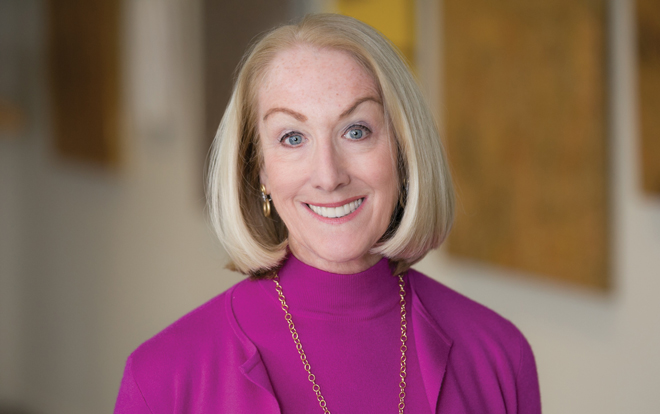
Self-taught, self-trained, she saved a Fortune 500 company.
When Anne Mulcahy began her career at the Xerox Corporation in 1976 as a field sales representative, she never intended to ultimately become president and CEO, much less to take the helm at a time when the company faced a struggle for survival. Ravaged by years of losses, a staggering $18 billion debt, and an SEC investigation into its accounting practices, Xerox was on the brink of collapse. Despite Xerox’s great challenges, she managed to turn the company around and return it to profitability and prominence as one of America’s best-known technology giants.
Find out more about Anne M. Mulcahy, winner of the 2018 Bower Award for Business Leadership.
When Anne Mulcahy began her career at the Xerox Corporation in 1976 as a field sales representative, she never intended to ultimately become president and CEO, much less to take the helm at a time when the company faced a struggle for survival. Despite Xerox’s great challenges, she managed to turn the company around and return it to profitability and prominence as one of America’s best-known technology giants.
When Anne Mulcahy began her career at the Xerox Corporation in 1976 as a field sales representative, she never intended to ultimately become president and CEO, much less to take the helm at a time when the company faced a struggle for survival. Ravaged by years of losses, a staggering $18 billion debt, and an SEC investigation into its accounting practices, Xerox was on the brink of collapse. Mulcahy turned out to be the perfect choice.
Despite Xerox’s great challenges, she managed to turn the company around and return it to profitability and prominence as one of America’s best-known technology giants. Her early time in the sales trenches had given her invaluable experience and contacts with a wide range of customers and their concerns, as well as a deep familiarity with Xerox’s workings at the ground level. She used that experience to guide her as she gradually moved to positions of greater responsibility. In 1992, she became vice president for human resources, in charge of benefits, compensation, labor relations, training, and management development. By 1997, she rose to the position of chief staff officer, and was named a senior vice president a year later.
When Mulcahy found herself called to take over when a new CEO resigned after only 18 months on the job, she quickly realized that she had much to learn about running a Fortune 500 corporation. Building on her past roles at Xerox, she undertook an intensive self-directed course of on-the-job training. Instead of hunkering down in her executive suite, she traveled widely, seeking advice, feedback, and insight from people at all levels of the company, meeting personally with executives as well as Xerox customers and other business leaders. Then she set out to transform the corporation.
The first necessary step was to right the ship financially. Mulcahy lobbied banks and creditors to maintain Xerox’s financial resources and took firm, sometimes painful steps to cut costs and generate renewed cash flow, refusing to give in to the often easier choice of declaring bankruptcy. She also resisted pressure to cut back on Xerox's research and development efforts, realizing that they were the heart of its long-term future.
Then she set about analyzing the past decisions that led Xerox astray and restructuring and reorganizing the company to prevent it from falling into the same problems. Among her key emphases were the importance of building and maintaining relationships, not only with customers but within the company itself, and the necessity of communication at all levels, so that good ideas are not lost nor problems ignored. Even without the traditional training of most corporate presidents, Mulcahy acquired the necessary skills and sensitivity to accomplish such goals from her long experience in sales and human resources.
When she retired as Xerox CEO in 2010, Mulcahy made even more history, passing the position to Ursula Burns, the first African-American woman ever to head a corporation of this magnitude, in the first woman-to-woman succession in the Fortune 500. Mulcahy departed after bringing Xerox from the edge of oblivion back into profitability, restoring its worldwide credibility and image in the process in what has become a legendary example of a corporate turnaround. Perhaps as important is her standing as an iconic role model for women in the business world, demonstrating not only can they aspire to the highest positions, but achieve great success in them.
Mulcahy went on to become the chair and trustee of the Save the Children Federation from 2009 until 2017, a passion project that she pursued with the same vigor with which she had led Xerox, traveling worldwide to support the Federation's work. She continues to serve on the boards of several prominent corporations, including Johnson & Johnson and Target. Anne Mulcahy's career demonstrates that sometimes, the best person for the job is not the obvious or safest choice, but the person with the freshest eyes and an open mind willing to learn and daring to risk bucking traditional wisdom.
Information as of March 15, 2018

